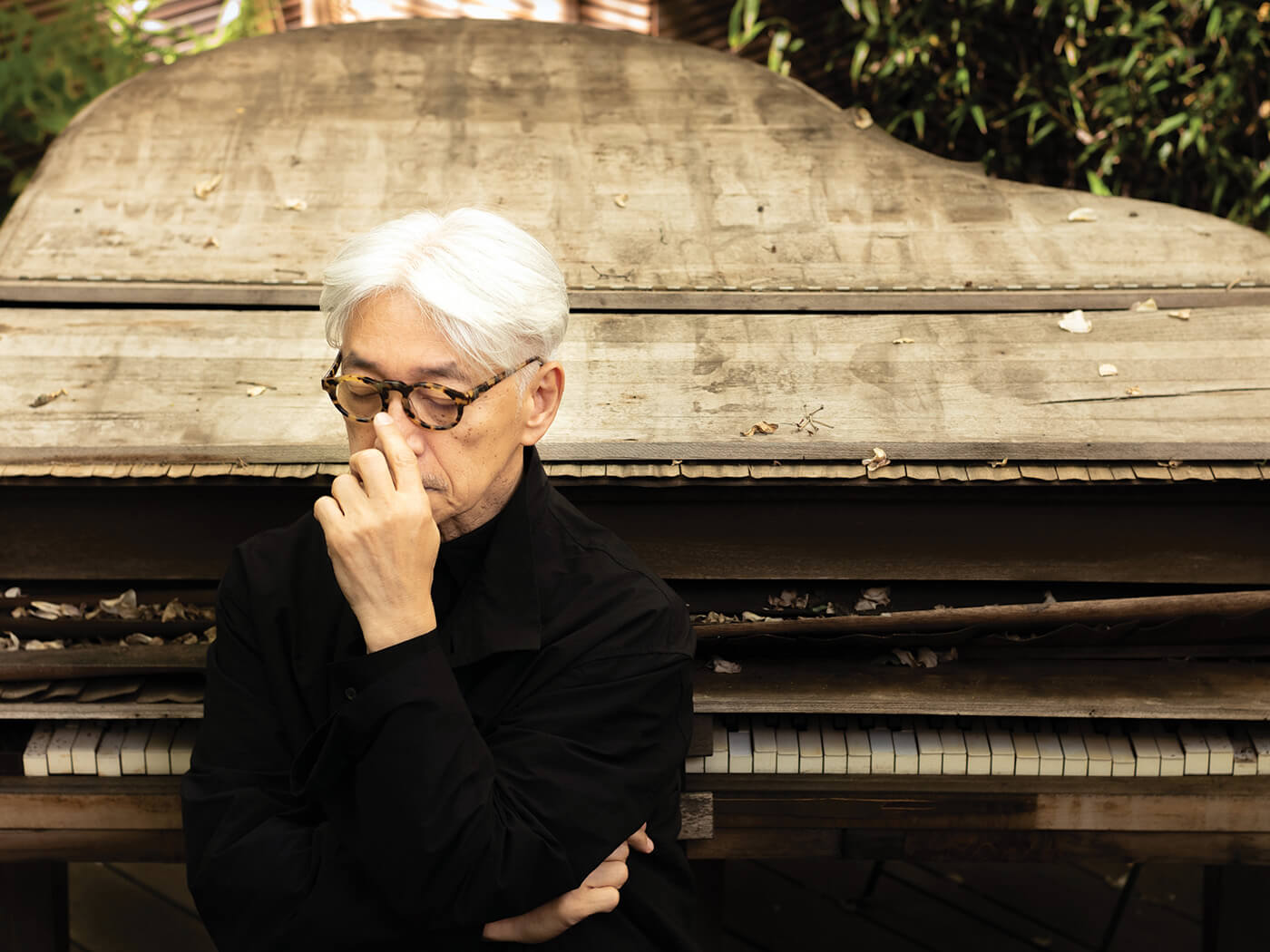On December 11, 2022, Ryuichi Sakamoto returned to public performance after an absence of two years. Recorded at Tokyo’s prestigious 509 Studio and streamed online, Playing The Piano 2022 found Sakamoto dressed in black, hunched over his grand piano, playing a selection of music from throughout his career. It brought into focus the Sakamoto we’re most familiar with – the artist in communion with his instrument of choice, playing music that is both delicate and fluid. But Sakamoto has travelled far and wide since his beginnings in the late ’70s with the pioneering techno-pop trio the Yellow Magic Orchestra – his work has encompassed Oscar-winning film soundtracks, critical electronic touchstones like “Riot In Lagos”, aesthetically heightened piano compositions and, as a tireless collaborator, he has recorded with everyone from David Sylvian to Caetano Veloso and Austrian digital adventurer Christian Fennesz.
Playing The Piano 2022 also marked Sakamoto’s first performance since his cancer diagnosis – his second in a decade. In a brief video interview to accompany the concert film, Sakamoto admits he finds concert projects too taxing, even when filmed one song at a time; live performance has been paused, at least, for the foreseeable future. As a consequence, the film – shot in crisp, atmospheric monochrome – captures a sense of quiet dignity and reflection suitable for the occasion. This mood extends further to Sakamoto’s first album of new solo material since 2017’s async. 12 was recorded following this latest diagnosis, the dozen pieces titled and sequenced by the dates each were written, culminating in what Sakamoto describes as a “sound diary” of this challenging period.
The album opens with “20210310”, a synthesiser piece that passes slowly through a series of softly sustained chords, occasionally moving far down the instrument’s lower register to create a more apprehensive effect. “20211130”, meanwhile, finds Sakamoto at his piano, picking out melodies while a crepuscular keyboard sound rises slowly and quietly in the background. Close listening is the key here: you might catch the sound of Sakamoto’s foot lifting off the piano pedal or the keys move as he lifts his hand. At the start of “20211201”, you hear Sakamoto breathing, then towards the end of the piece there’s a faint but quite defined sound, as if he’s shifting his position on his piano stool. The deeper you immerse yourself in the album, the more compelling these random, vérité details become; moments of intimacy and humanity that physically insert the composer into the music he’s performing. Sakamoto’s 21st-century output has tended towards ambient and abstraction, music that doesn’t naturally come with built-in narratives. Yet the emotional gravity of 12 is so palpable, one wonders how much our response is to the music, or to the context. During his treatment for throat cancer in 2014, Sakamoto collaborated with the ambient heavyweight Taylor Deupree and Corey Fuller and Tomoyoshi Date, known as Illuha, on Perpetual, which they improvised live at an event in the Japanese city of Yamaguchi. A mix of piano, processed guitar, pump organ and synthesisers, along with field recordings and found objects, Perpetual’s most radical quality was its silence – the way the music gradually dissipated like fine mist leaving nothing behind. In some ineffable way, the disappearance of sound on Perpetual seemed entwined with Sakamoto’s condition; a notion that reasserts itself on 12, particularly in the pauses where Sakamoto raises his hands above the piano keyboard and the room beyond him is still.
The most conventional pieces on 12 are “20220302 – sarabande” (the only song from 12 on the setlist for Playing The Piano 2022) and its companion piece “20220302”. A sarabande, a courtly dance popular during the Baroque period, seems to be a suitable reference point for Sakamoto’s precise, geometric configurations here.
As you might imagine, the ghosts of Erik Satieand John Cage are summarily evoked. On “20220302”, though, he introduces sudden, inquisitive flurries of notes that provides a playful interlude to these elegant, nuanced though ultimately melancholic compositions. Though “20220307” and “20220404” are also piano pieces, Sakamoto begins to gently disrupt the atmospherics: unlike the close-mic conditions of the earlier piano pieces, “20220307” sounds like it was recorded at a distance, while on “20220404” the music threatens to disappear in places until its final eight seconds experience a gradual falling away of sound. “20220304”, 12’s final track, consists entirely of bells. Perhaps because Sakamoto switches instrument, this track feels like a coda; a point where you sense things are being wrapped up, when the music has become so abstracted it disappears. As sparse as 12 is, we’ve worked hard to engage with it, and for it to gradually, finally vanish is a strangely disquieting experience.
Incidentally, the album is released on January 17 – which is also Sakamoto’s 71st birthday. As much as these graceful and meditative pieces became threnodies for Sakamoto’s condition, 12 is also something of a personal and creative victory for the composer. Once again, I guess, context is everything.

